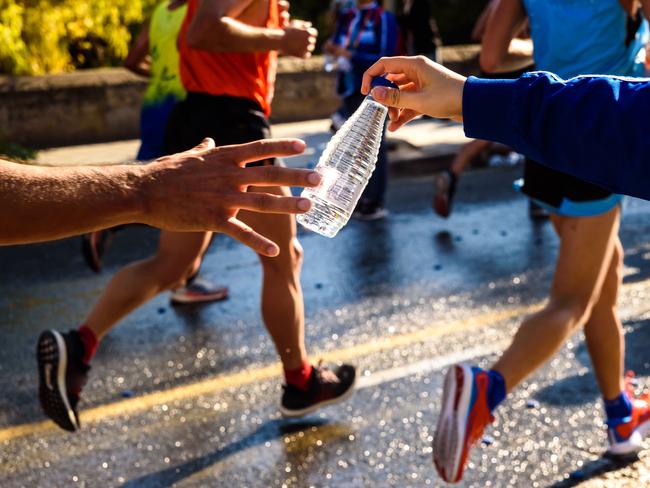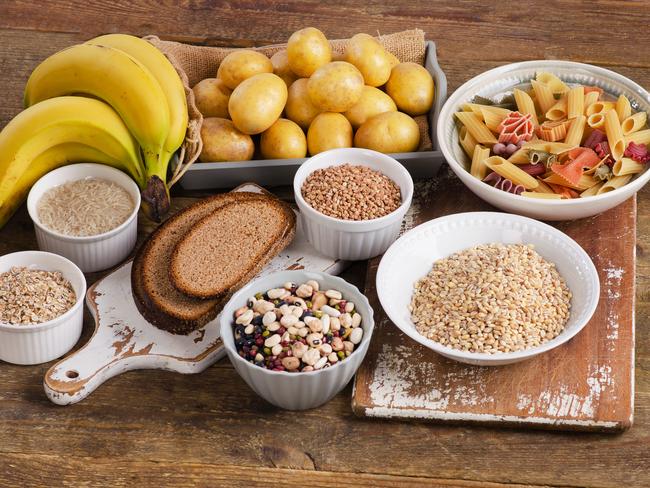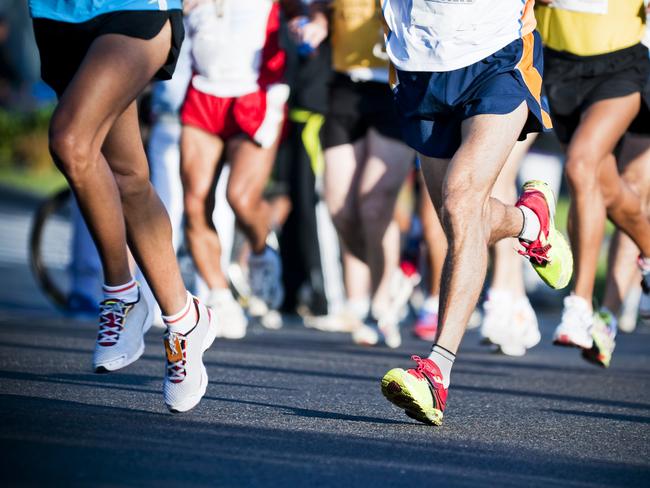How to run a marathon – without injury
As more people take up running – and aim for a marathon – here are the experts’ top tips to boost performance and the best way to start training for next year.

Running is on the rise, with hordes of joggers taking to parks and pavements. Some finish somewhere between their couches and 5km; others are in training to run a half or full marathon.
A quarter of Britons now run at least one to three times a week, according to figures from the 2025 UK Running Report conducted by sportsshoes.com – up 5 per cent since this time last year. Increasingly people are setting themselves longer distance targets: more than 840,000 people applied for the ballot to enter the 2025 London Marathon, smashing the record of 578,304 a year earlier. In addition, the fitness tracking platform Strava’s global Year in Sport Report, based on data from 135 million people, showed a 9 per cent increase in the number of marathons and ultra-marathons logged in 2024.
Scientific research supports the notion that running is good for us. Rather than wrecking our knees, racking up the miles has been proven to strengthen our joints as we age, while a study published in the medical journal Jama found that the risk of dying from a heart attack during a run has fallen dramatically in recent years.
The brain may also benefit. A new study in the journal Nature Metabolism found that although after a race marathon-runners have depleted levels of myelin – the crucial fatty substance that insulates nerve fibres in the brain and is involved with memory, sensory and emotional regulation – it regenerates within weeks, potentially leaving the brain stronger.
“The biggest takeaway here is that this is just one more way that an activity like marathon running can help your brain function,” said Carlos Matute, the lead researcher, a professor of anatomy and human embryology at the University of the Basque Country and a long-distance runner himself.
But running is not without risk. “I see a lot of people in clinic at this time of year who are trying to cram in missed training and extra running because they haven’t prepared well,” says Professor Courtney Kipps, a consultant sports physician at University College London and assistant medical director of the London Marathon. “You don’t have to be a lifelong runner with loads of experience to complete a marathon, but you do need to prepare well.”
So, if you feel the urge to push yourself farther and, possibly, faster, here’s how best to do it:
1. Don’t try to achieve too much too soon
The speed at which you can progress your running program depends on where you are starting from. If you are a beginner, you will need to build up time on your feet, which you can do even by walking longer and further, gradually increasing your running kilometres each week until you are ready to start a training plan. As a rule of thumb, you should not increase the amount or intensity of your running by more than 10 per cent a week.
“It’s a sensible guide, but everyone is different,” Kipps says. “Some people can tolerate a little more progression, but others can’t increase by even that much, so you need to judge what is too much for you. Before you increase the speed or duration of runs, make sure the amount you are doing is challenging but manageable.”
2. Allow yourself walk breaks

An approach known as Jeffing or the Galloway Method, developed by the former Olympian Jeff Galloway, involves factoring walking breaks into your run rather than having to stop because you are exhausted. For beginners this could mean running for 60 seconds and then walking for 2 minutes, repeated over a total of 20 minutes. The aim is to build up the run intervals to last 2-4 minutes and cut the walks to 30-60 seconds. Researchers reporting in the Journal of Science and Medicine in Sport found that while the run/walk method didn’t reduce cardiac stress compared with running a marathon distance at a steady pace, it did enable recreational runners “to achieve similar finish times with less [muscle] discomfort”.
3. Vary your pace
Most of your running will be at a steady pace, but it’s good to include some faster bursts and changes of gradient that require varied effort (or fartlek training, as the Swedish call such workouts).
For a 2024 study published in the journal Sports Medicine, Professor Barry Smyth, digital chairman of computer science at University College Dublin, analysed data from the 16-week training plans of nearly 120,000 recreational runners who had completed a marathon. It’s no surprise that the slowest runners completed the least amount of training – but the fastest runners accomplished most of their longer-distance weekly running at a slower, low-intensity pace. “Even at elite level the lion’s share of training miles for long-distance running takes place at a relatively low intensity,” says Sam Murphy, a running coach and the author of Run Your Best Marathon. “It’s this type of slow running that enables you to build up the volume you need to complete the target distance.”
4. Don’t push hard when temperatures rise
Kipps is one of a panel of medical experts behind a free app called Race Ready, which gives advice on medical and health issues for distance runners. He says one of the most common mistakes people make is to push too hard in warm weather; during training and races you should be cautious in such conditions. “In spring endurance races we, as a medical profession, are very aware that people will have been training during the winter and are used to running in cooler conditions,” Kipps says. “When it gets a little bit warmer, not even hot, you might not be acclimatised, and overheating of runners is becoming a more prevalent and dangerous risk.”
During the London Marathon, at various points on the course teams of heatstroke experts are on hand with Ice Cold Water Immersion Kits. “If it is warmer or more humid, hold back on effort when you run,” Kipps says.
5. Drink only when you’re thirsty
Many runners have a fear of becoming dehydrated, but the message from scientists is that it is riskier to drink too much fluid, which can cause water toxicity, than too little when running long distances. “The adage that ‘by the time you are thirsty it is too late’ is an outdated and dangerous message,” Kipps says. Instead, you should use thirst as an indicator and drink no more than you feel you need. If the weather is warm you may need a little more fluid, but not a lot more, than usual. “The risk of drinking too much of anything, water or a sports drink, is that you risk diluting the sodium in your blood and causing hyponatraemia, which could be catastrophic and even fatal.”
Cases of hyponatraemia are more common than those of dehydration during organised races. “In the medical tent [at the London Marathon] we are set up to look out for hyponatraemia and have on-site testing to check sodium levels,” Kipps says. “We never give people extra fluid unless there’s a very clear reason to do that, but over-hydration is a real risk.”
Most half and full marathon events provide bottled water and sports drinks. “I would recommend practising with the official sports drink before the race, as you don’t know whether it will agree with you on the day,” Kipps says. “Leave nothing to chance.”
6. Develop a nutrition routine

It’s essential that you fuel your body correctly during endurance training. This means focusing on healthy carbs – pasta, brown rice, wholegrains, pulses and starchy veg such as sweet potatoes, carrots and squash. “As a long-distance runner, at least 50 per cent of your calorie intake should come from carbs,” Murphy says. “Ensuring you start your runs with enough glycogen minimises the risk of running out of energy.”
During training you can boost pre-run energy reserves with high-carb snacks such as plain popcorn, oatcakes and bananas. Routine is important and you need to work out when and what you can eat for breakfast before a run so you can replicate it on race day.
The scientific consensus is still to practise carbohydrate-loading in the run-up to a marathon. “This means depleting carb stores by going for a run, and then consuming a big carb meal, such as pasta, with less protein to build up stores in the 1-2 days before a marathon,” Kipps says. “It doesn’t work for everyone, which is why you need to practise what works for you during training.”
Eating protein with carbs is useful for replenishing the body’s stores after a long run. “But there is no need to take on additional fluids if you have consumed enough when running,” Kipps says.
7. Avoid fancy supplements
From beetroot shots to bicarb sachets, blackcurrant capsules to cherry juice, the number of supplements that claim to bring an edge to your running is enormous. “I don’t recommend you take any additional supplements to run a half or full marathon if you are eating a healthy diet,” Kipps says. “And if you have been training regularly, your body will have become accustomed to storing what it needs for a long run so that you are prepared.”
8. Make a long-term plan
Websites, books and magazines typically recommend a 16-week training plan to prepare for a full or half marathon. “Four-month training programmes that take you up to race day are fairly standard, but we need to remember these are a minimum,” Kipps says. “A lot depends on your base fitness before, and if you can start to do some running before you start one of these programmes, it will help your body to become comfortable with the repetitive impact of running.”
Murphy says everyone is different in the amount of time they require to build up to run a full or half marathon. “If you are planning to do a marathon, I would say you need to be comfortable running 12-13 miles (19-20km) and clocking up 20-25 miles a week of training by the time you start a specific training plan,” she says. “It’s not that running a marathon isn’t possible without these prerequisites, just that it limits the time you have to progress to where you need to be by race day.”
9. Wear the right shoes

Your shoes are the biggest financial investment you will make. It’s best to be fitted at a specialist running shop where you can ask for advice about the shoes most suited to your running style, body weight and speed. But research by Dr Benno Nigg, a biomechanics scientist at the University of Calgary, showed the most important factor to consider when purchasing a pair of trainers is comfort. If you can afford a couple of pairs, shoe rotation can preserve their shelf-life: one pair to wear and one to air, allowing sweat to dry out and midsole foam to decompress. Expect to need to replace them every 4-8 months depending on wear and tear.
When it comes to race day, if you have more than $420 to spend you may choose the carbon-plated super-shoes favoured by elite runners. Researchers at Leeds Beckett University’s Carnegie School of Sport and other institutions compared running performance while wearing a regular pair of Saucony trainers with performance while wearing the brand’s Endorphin Speed 2 super-shoe and found “there was a physiological benefit to running in the super-shoes even at the slower speed”. If not, regular trainers will get you round.
Whatever shoe you wear on marathon day will need to be tested during training. “One of the biggest errors marathon-runners make is to start the race in shoes they haven’t worn before,” Kipps says. “That might affect their gait or leave them prone to blisters, which would probably curtail attempts to finish the race.”
The Times

To join the conversation, please log in. Don't have an account? Register
Join the conversation, you are commenting as Logout